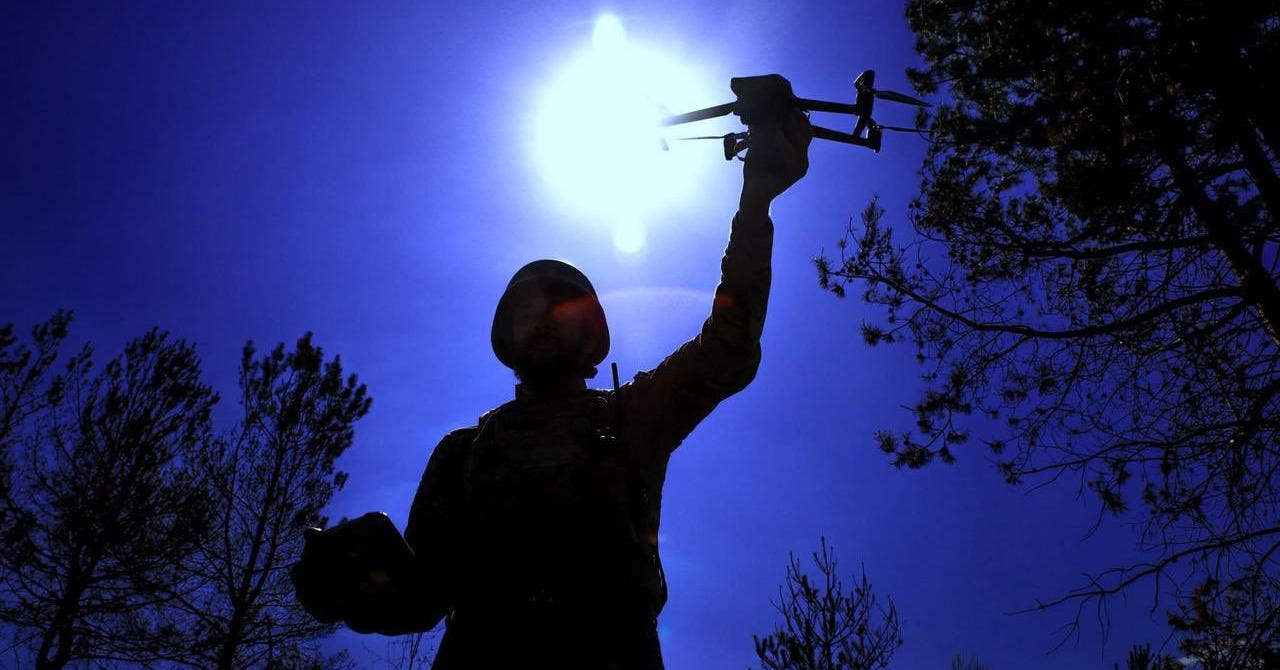Russia's Best Drones Lie in Wait Beside the Road, Patiently Watching for Passing Ukrainian Troops
Ukrainian drone crews are trying to prevent Russian drone ambushes
The best Russian drone units are using their best first-person-view drones to set up complex ambushes. A tiny explosive drone flies to some road potentially miles from the front line and then settles onto the ground—and waits for a Ukrainian vehicle to pass before taking off again … and striking.
It’s a method that can take Ukrainian troops by surprise, and expose them to ambushes in areas where they once felt safe—and where they might not be taking all the usual precautions to protect themselves from aerial attack. The tactic is so effective that it was a major factor in Ukrainian forces’ eventual defeat in Kursk Oblast in western Russia in late February and early March.
Now Ukrainian drone operators are fighting back—by flying their own drones along the likeliest ambush routes, scanning for and attacking Russian FPVs lying in wait along the roadside.
That’s right: drone route-clearance. It’s “another type of drone-on-drone warfare,” mused Roy, a Canadian drone and electronic-warfare expert. (See video above.)
Patient attackers
Russian bloggers first noted Ukrainian operators deploying the “lie-in-wait” drone tactic back in November 2023. “The drone will wait where you will definitely return or where you have already been more than once,” one blogger warned.
The drone’s camera would remain on but its engines would idle, preserving its battery life—and affording its patient operator the time to wait, and watch for a target. The operator would reactivate the engines, and relaunch the drone, only when they were confident of a successful hit on a passing vehicle.
“There is almost no chance of dodging such an attack, since the reaction time is very short,” the Russian blogger noted. “It is difficult to counteract such tactics.”
Difficult, but not impossible. “We can only recommend not to bunch up, always move in an extended chain,” the blogger advised. “Approach abandoned equipment, shelter entrances and other points where you are often, with caution.”
And since almost all FPV drones back in 2023 sent and received signals via wireless radio, the grounded drones were still detectable by radio. “Use drone detectors that are tuned for sensitivity and frequency,” the blogger advised. “A video signal will be transmitted from a drone in ambush, and the detector will be able to warn you.”
The proliferation of fiber-optic FPVs, which relay signals along miles-long but millimeters-thick optical fibers, changed everything. “The absence of a radio video transmitter significantly reduces battery consumption,” Roy explained.
Fiber-optic FPVs can range even farther and wait even longer on the ground—up to 12 hours, according to Roy. And they’re not detectable on radio. The only way to defeat a fiber-optic FPV is to intercept it right before it strikes, or trace its optical fiber back to its operator and bombard the operator.
The former tactic requires careful up-armoring with cage armor or nets. The latter is getting harder as more and more castoff fibers litter the battlefield.
Drone-on-drone violence
Fiber-optic ambush FPVs helped Russia’s elite Rubicon drone team sever the main supply line to the thousands of Ukrainian troops who carved a 250-square-mile salient from Kursk starting in August—and clung to it until late February. That’s when Rubicon deployed to Kursk, and got to work. (See video above.)
“Rubicon employs advanced drone tactics,” analyst Andrew Perpetua observed. “They often target short sections of roads—100 to 300 meters long—and saturate these areas with drones. Attacks are frequently carried out in groups, sometimes striking the front, back and sides of a vehicle almost simultaneously. This approach has also been used to hit multiple vehicles in a convoy at once, compounding the damage.”
“They also set traps by landing drones on roads and detonating them under passing vehicles, functioning like anti-tank mines—likely using upward-facing shaped charges,” Perpetua added.
In a chaotic few days in late February, Rubicon destroyed hundreds of Ukrainian vehicles on the road into the town of Sudzha, the anchor of the Ukrainian salient in Kursk. Starving and running out of ammunition, the Ukrainian survivors had no choice but to retreat. By early March, the last surviving Ukrainians had made their way back across the border.
Bloodied by their experience in Kursk, the Ukrainians are scrambling to counter the ambush FPVs. As is increasingly the case in Russia’s 39-month wider war on Ukraine, they’re countering new drone tactics with … new drone tactics.
Read more:
Russia Tests New 'Porcupine' Anti-Drone Armor. Ukraine's Drones Still Win.
Two years ago, Russian troops began wrapping their armored vehicles in shell-like layers of add-on armor—all in a desperate effort to protect the vehicles from Ukrainian drones. The Ukrainians gave these up-armored vehicles a name—“turtle tank”—and got to work destroying them with better-aimed and more powerful drones.






